Berkheya coddii
Berkheya coddii Roessler
Family: Asteraceae
Common names: Codd’s berkheya, nickel-accumulating berkheya (Eng.)
Introduction
An eye-catching herbaceous perennial, with attractive yellow daisy-like flowers in summer. It is endemic to the serpentine soils of Mpumalanga, and is a known nickel hyperaccumulator plant.
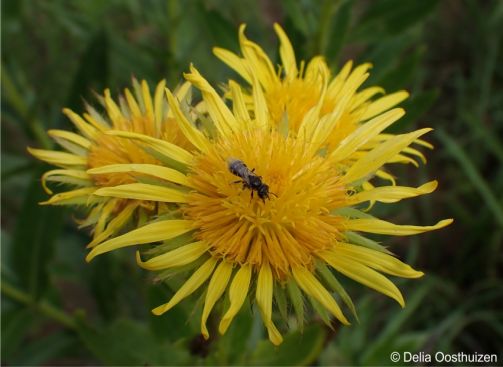
Description
Description
Berkheya coddii is a deciduous, herbaceous perennial that reaches 1.5 m in height. It is a fast growing plant and has a life span of 3 to 5 years. This plant species has a single greenish stem, forms new shoots from the rootstock in spring, and dies back in late summer. Leaves are 100–150 mm long and 30–45 mm wide, bright green above and paler below with trichomes (hair-like structures) on the margin, ovate lanceolate with a pointed apex, alternate and attached directly on the stem. Striking yellow daisy-like flowers, 40–60 mm wide, surrounded by greenish, spiny bracts are borne on a long stalk in early summer (December). Seeds are small, black, oblong, with a smooth surface, and ripen in late summer to autumn (January to April).
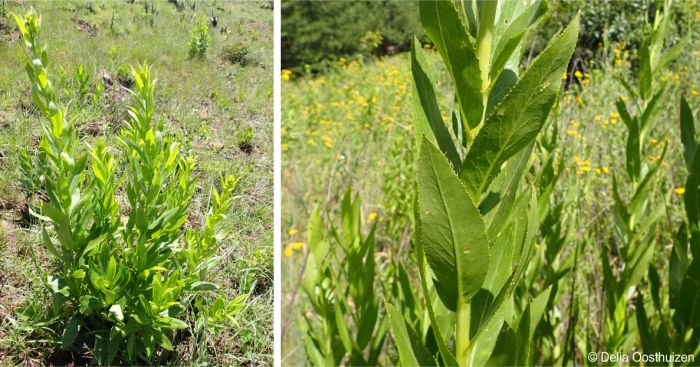
Conservation Status
Status
Berkheya coddii is assessed as Rare by the Red List of South African Plants because it is endemic in the Mpumalanga province of South Africa where it is known from just five sites. The population is stable although its natural habitat is targeted for pine plantations.
Distribution and habitat
Distribution description
Berkheya coddii is native to northern South Africa and occurs near Barberton in Mpumalanga. It is a terrestrial plant and its habitat is Barberton Serpentine Sourveld and Barberton Montane Grassland. This plant species grows in serpentine soils, in grassland on rocky hillsides, at elevations of 791–1390 m. It has the ability to accumulate nickel in its leaves and stems.
Berkheya coddii is situated in a cool climate with a mean annual temperature of 15.5–19.1°C and a maximum annual temperature between 34.3–38.4°C, and receives 736–1200 mm rainfall per annum. It is a hardy plant species that tolerates drought and light frost.
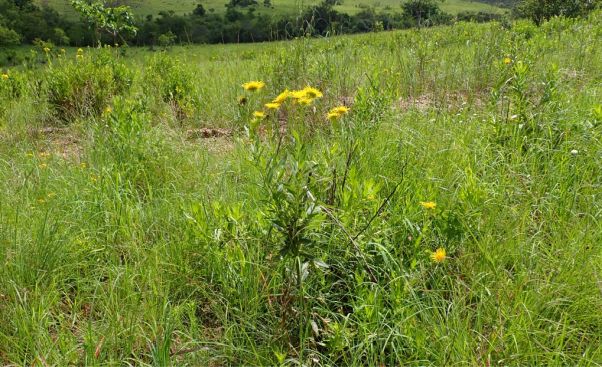
Derivation of name and historical aspects
History
This plant species belong to the Asteraceae, a large and widespread family of about 32 000 species, commonly known as the sunflower or daisy family. The genus Berkheya is distributed in tropical areas especially in southern regions and it consists of about 75 species, of which 71 species can be found in South Africa. The genus was named in honour of the Dutch scientist and artist Johannes le Francq van Berkhey. This species is named after Dr L.E.W. Codd, a South African Botanist and plant collector at the Botanical Research Institute in Pretoria from 1963 to 1973.
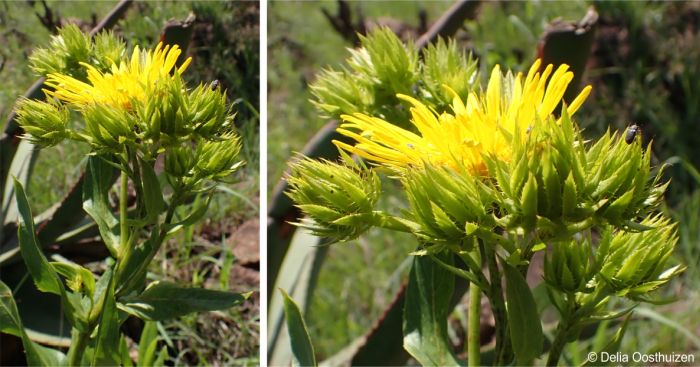
Ecology
Ecology
Berkheya coddii flowers attract insects like bees and butterflies. This plant species is pollinated by bees. Seeds are dispersed by wind from January to April. The beetle Chrysolina clathrata feeds on the leaves.
Berkheya coddii grows on serpentine soils, which contain relatively high amounts of heavy metals including magnesium, iron and nickel. The plants that live on these soils are adapted to survive the challenges that the metals bring, and the plant communities that live on them differ from those on surrounding non-serpentine soils. Berkheya coddii has been found to take up strikingly large amounts of nickel from the soil and store it in the plant tisues, and is known as a nickel hyperaccumulator plant. The relatively high levels of nickel in the plant may cause it to be toxic to some herbivores and thus resistant to attack from most insect pests when grown on nickel-rich soils.
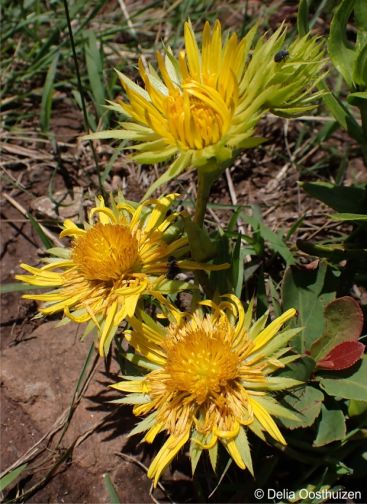
Uses
Use
Berkheya setifera and many other species of Berkheya, are used in traditional medicine as herbal remedies to treat many ailments, including stomach complaints, inflammation and fever. There are no records of Berkheya coddii being used as medicine, and it may be similarly used, however, the high nickel content of wild plants and its effect on people that ingest it, needs to be researched.
In horticulture, Berkheya coddii can be used as an ornamental plant in gardens with its striking yellow ray florets, and it can be used to control soil erosion. It is a perfect plant for water wise gardens.
Because of its ability to remove nickel from the soil, Berkheya coddii can be used to remove pollutants from soils lightly polluted with nickel (phytoremediation), as well as in phytomining and in agromining (a crop of the hyperaccumulator plant is grown to recover the metal from soil).
Growing Berkheya coddii
Grow
Berkheya coddii can be easily propagated by seeds, cuttings and division. Sow the seeds in spring, in a mixture of 1 part river sand and 3 parts of potting soil and place the seed tray in a warm and moist environment. Germination will start after 2 to 3 weeks. Soaking the seeds for 24 hours before sowing may speed up the germination process.
At the Lowveld National Botanical Garden, Berkheya coddii was propagated by cuttings and division. Collect stem cuttings in summer, with a sharp blade, in the morning, from a healthy mother stock plant, to reduce injury. Fill a clean seedling tray with a growth medium of 1 part washed river sand and 3 parts potting soil. Make a cut right under the node with a sharp blade, dip the cutting in a rooting hormone, make a hole using a dibber stick in a seed tray, plant the cutting and firm the growth medium around it. Place the cuttings tray under shade netting, and always keep the growth medium moist. Root formation will take place after a month.
Propagation of Berkheya coddii by division is easy. The best time to propagate this plant species is in spring when the plant is actively growing. After digging up a mature Berkheya coddii plant with a number of suckers, separate the suckers carefully by hand without damaging the roots. Prepare a growth medium of 1 part washed river sand and 3 parts potting soil. Sterilize the pot using hot water. Add a little bit of the growth medium in the pot, plant the suckers, add more growth medium and organic fertilizer, and firm around the sucker. Keep the sucker in a partly shaded area, and water it twice a week.
Plant the young Berkheya coddii plants in the garden after three months. The plants grow very well in full sun or part shade, and need 6 to 8 hours of sunlight daily for optimal growth. It prefers a well-drained serpentine soil or loamy soil. Overwatering should be avoided as waterlogged soil will lead to root rot and underwatering should be avoided as it will cause wilting and stunted growth. Fertilize every 4–6 weeks during the growing season. Use a bio-organic fertilizer to keep the plant growing and healthy.
Deadheading should be done after seed collection or as the blooms fade, to promote new growth and re-flowering.
Berkheya coddii has fibrous root system, and plants can become root bound which will restrict the growth of the plant and nutrient uptake. Re-potting is necessary for the development of the plant.
Berkheya coddii can be best used in mixed beds and in herbaceous borders. To achieve a perfect match and a stunning flower bed, plant Berkheya coddii together with Blepharis subvolubilis, Gladiolus serpenticola and Polygala viridifolia.
Fungal diseases such as powdery mildew and root rot can be a threat to Berkheya coddii. Appropriate fungicides should be used to combat these diseases. Pests such as spider mite, scale, mealy bug and aphids can cause damage on the plant, and insecticides should be used to control them.
References
- Boyd, R.S., Davis, M.A., Wall, M.A. & Balkwill, K. 2009. Host plant seletion of Chrysolina clathrata (Coleoptera: Chrysomelidae) from Mpumalanga, South Africa. Insect Science 16(1):81-88.
- Brooks, R.R., Robinson, B.H., Howes, A.W. & Chiarucci, A. 2001. An evaluation of Berkheya coddii Roessler and Alyssum bertolonii Desv. for phytoremediation and phytomining of nickel. South African Journal of Science 97:558-560.
- Burrows, J.E., Lötter, M. & Victor, J.E. 2009. Berkheya coddii Roessler. National Assessment: Red List of South African Plants. Online. http://redlist.sanbi.org/species.php?species=3077-31.
- Groeber, S., Przybyłowicz, W., Echevarria, G., Montarges-Pelletier, E., Barnabas, A. & Mesjasz-Przybyłowicz, Jolanta. 2015. Fate of nickel and calcium in seedlings of the hyperaccumulator Berkheya coddii during germination. Biologia Plantarum 59
- Maroyi, A. 2019. A review of botany, medicinal uses and biological activities of Berkheya setifera DC. )Asteraceae. Journal of Pharmaceutical Sciences and Research 11(8):2942-2948.
- Plants of the World Online . Berkheya coddii Roessler. https://powo.science.kew.org/taxon/urn:lsid:ipni.org:names:184533-1. Accessed 20/03/2025.
- Rankel, K. 2025. All about Codd’s Berkheya : Essential Facts. Greg. Online. https://greg.app/codds-berkheya-overview/.
- Robinson, B.H. et al. 1997. The potential of the high-biomass nickel hyperaccumulator Berkheya coddii for phytoremediation and phytomining. Journal of Geochemical Exploration 60(2): 115-126.
Credits
Winfred Ngwenya and Charmaine Mdhluli
Lowveld National Botanical Garden
April 2025
Acknowledgements: the authors thank Delia Oosthuizen for providing images, and Mervyn Lotter for providing information.
Plant Attributes:
Plant Type: Perennial
SA Distribution: Mpumalanga
Soil type: Loam, Metal-rich
Flowering season: Early Summer
PH:
Flower colour: Yellow
Aspect: Full Sun
Gardening skill: Easy
Special Features:
Horticultural zones
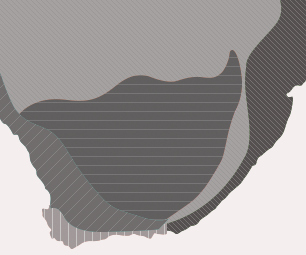







Rate this article
Article well written and informative
Rate this plant
Is this an interesting plant?
Login to add your Comment
Back to topNot registered yet? Click here to register.